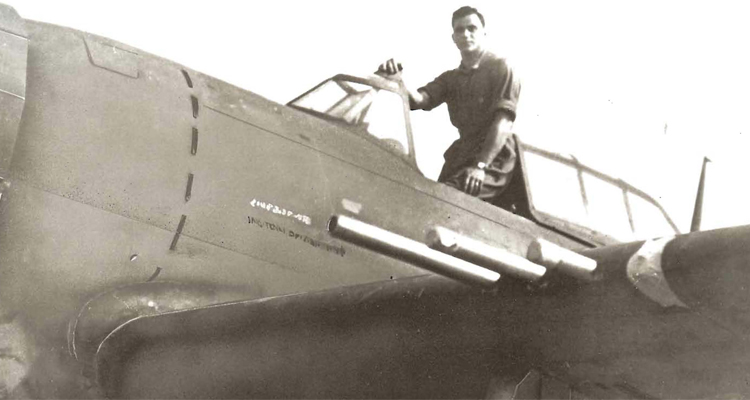On January 5, 1944, 2nd Lt. Kenneth Hindersinn was flying his P-47D Thunderbolt as tail-end Charlie on a B-17 escort mission over France when 20mm cannon rounds from a Focke-Wulf Fw-190 tore into his fighter from directly astern. It was the beginning of a lousy day for Hindersinn. He turned toward England with smoke in the cockpit, but losing altitude over the icy Channel, thought better of that plan and returned to France, where he tried to bail out over Normandy.
The canopy had been jammed by the German rounds, so his only option was to worm through the small escape panel in the greenhouse, parachute pack and all (his was a razorback D model, not one of the later bubble-canopied Ds). He inevitably got stuck. Fortunately, the Jug entered a spin, the centrifugal force tore Hinnersinn loose and he popped his chute.
Landing on a farmhouse roof amid German troops, he made a run for it…only to become entangled in a hedgerow’s barbed wire. Hindersinn spent the rest of the war in Stalag Luft I, on the Baltic Sea. Bad luck continued to dog him: In 1993, when Hindersinn was 73, his schizophrenic eldest son attacked him with an ax, badly injuring him. He died in 2003.
Last September a farmer near St.-Mère-Eglise, in Normandy, was backhoeing a drainage system for his field when he hit metal—first a landing-gear leg and wheel, then four machine guns, an engine, parts of a cockpit and a P-47’s big, tailcone-mounted turbosupercharger. When the engine’s serial number was checked out, it turned out to be Hindersinn’s airplane. One of the propeller blades had obviously taken a 20mm hit.
The wreck recovery was overseen by a French WWII historical society, Picauville se Souvient (Picauville Remembers). Another local commemoration organization, Association Normande pour le Souvenir Aérien (Normandy Aviation Memorial Association), estimates that Hindersinn’s airplane was one of the 10,000 Allied and German airplanes shot down over Normandy, 6,000 of them during the three months following D-Day.





